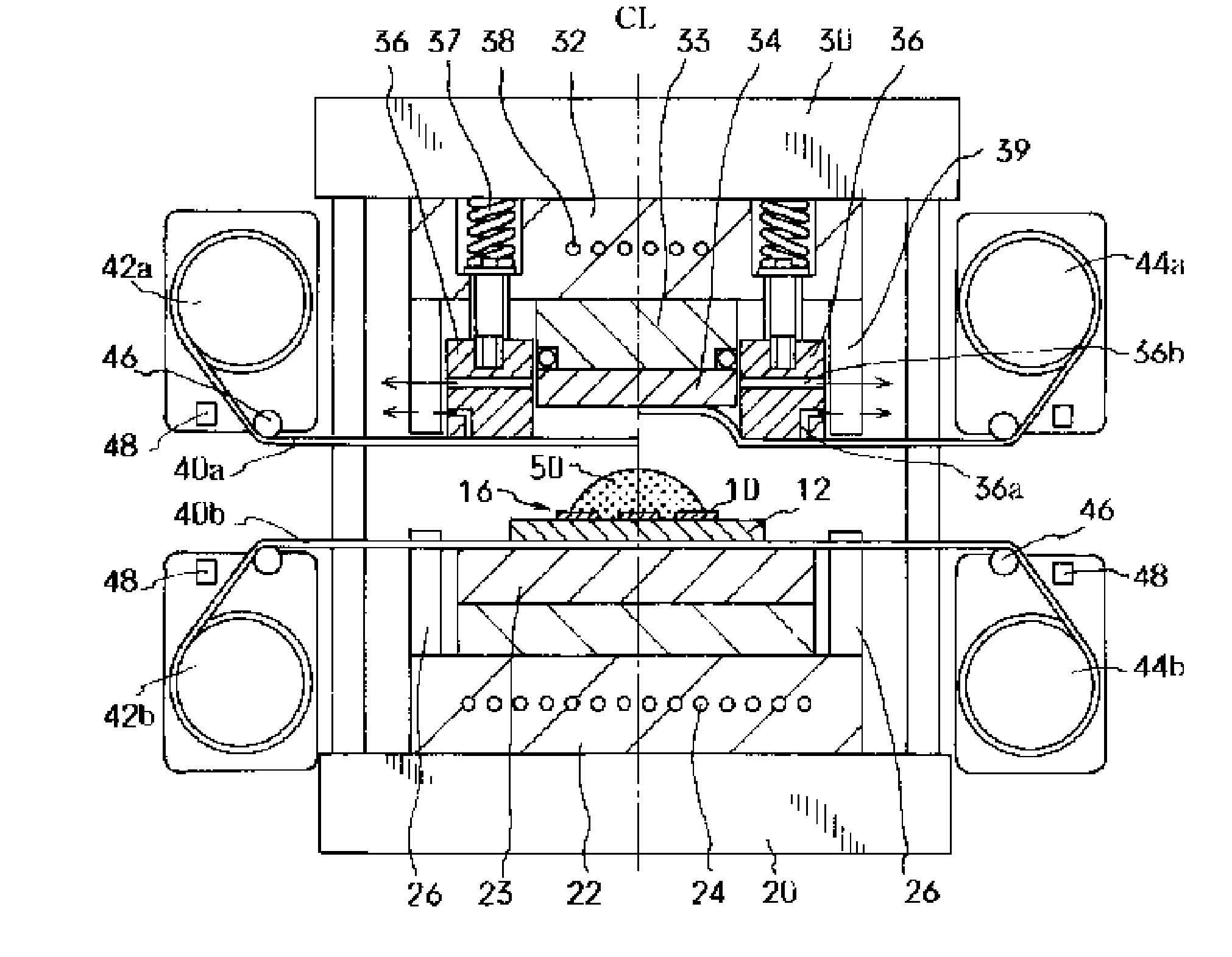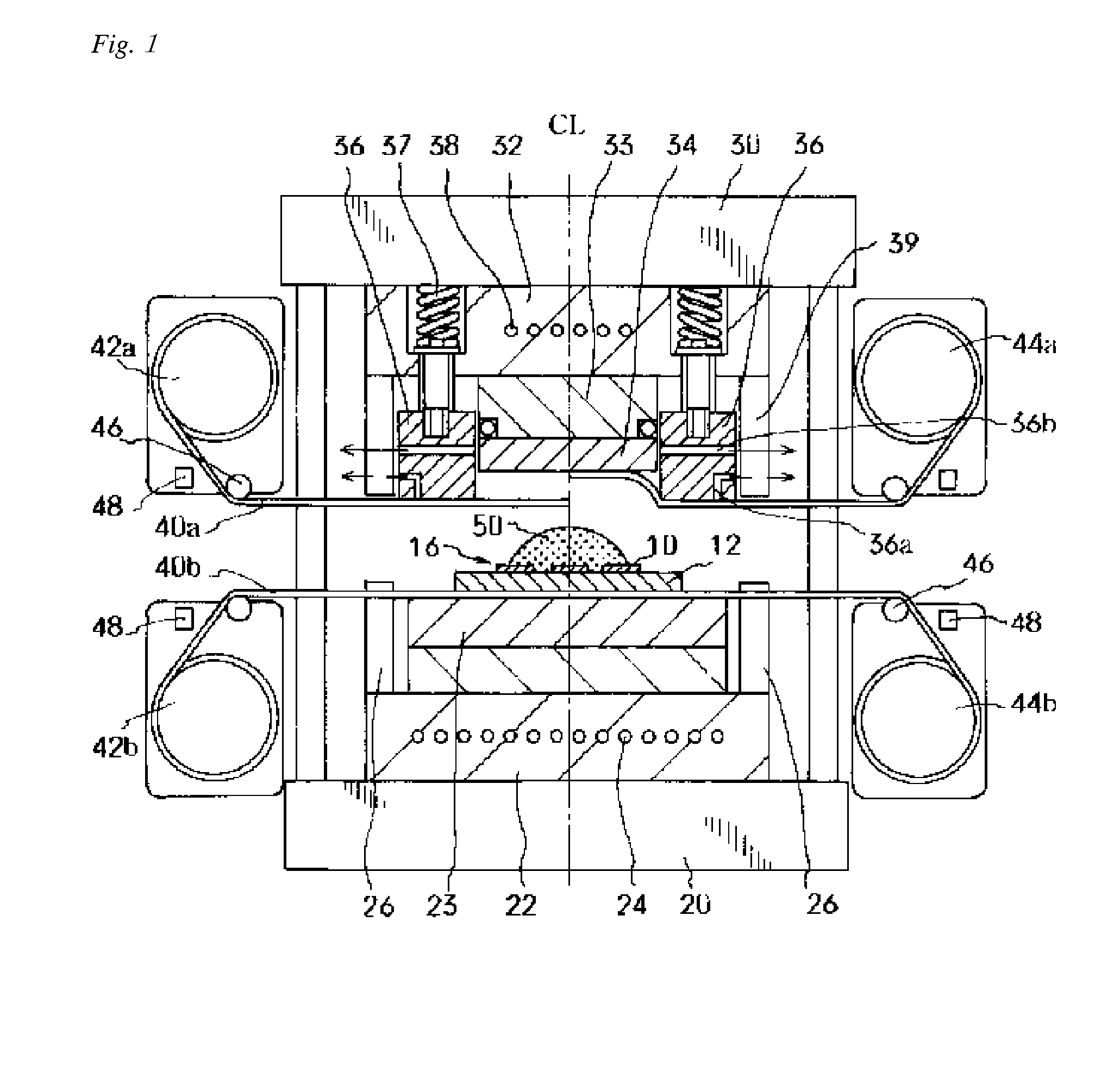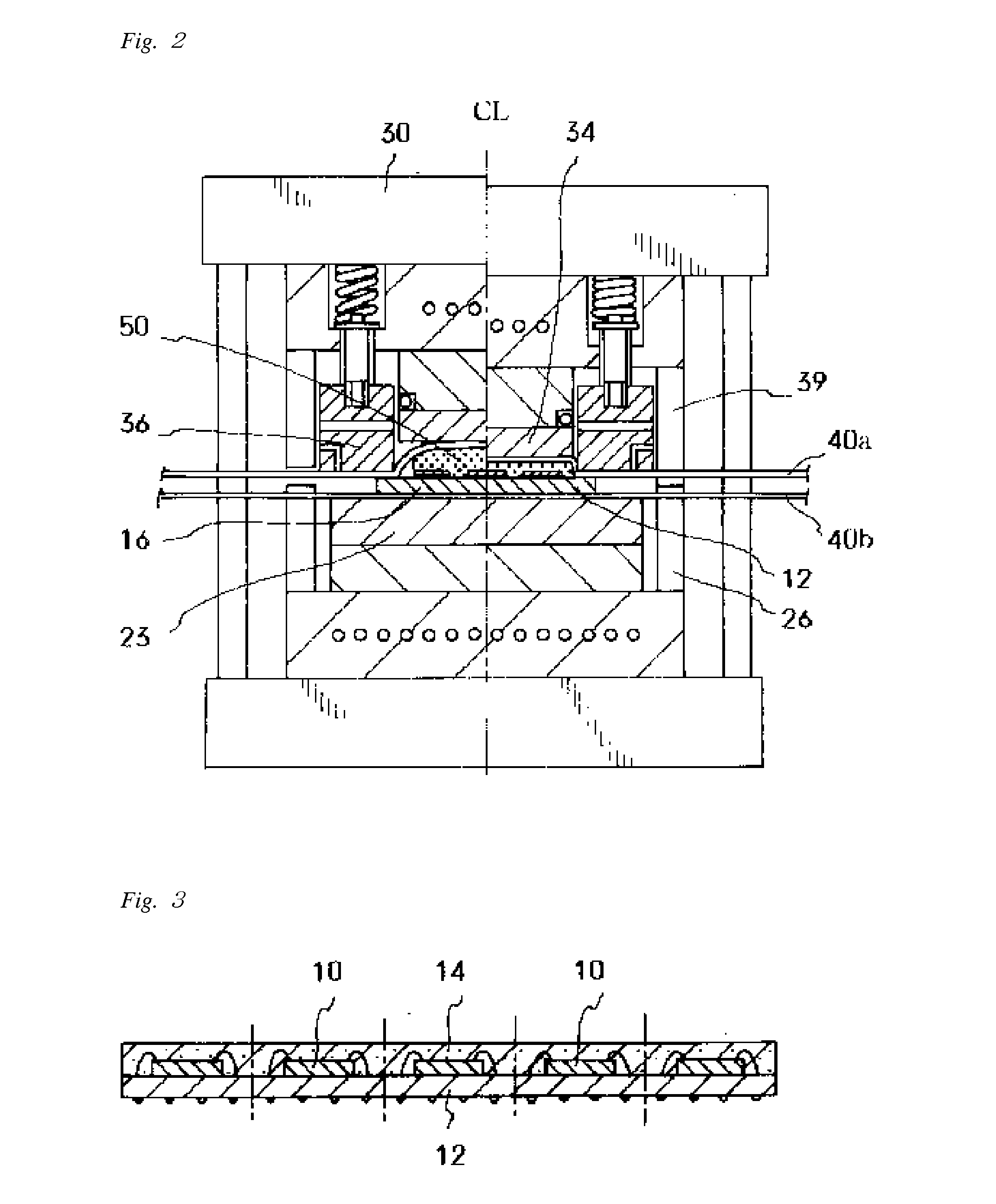Method Of Manufacturing A Semiconductor Device And A Semiconductor Device Produced Thereby
a manufacturing method and semiconductor technology, applied in semiconductor devices, solid-state devices, basic electric elements, etc., can solve the problems of increasing the possibility of resin void formation, increasing the buckling of chips and printed circuit boards, and increasing the thickness of sealing-resin layers, so as to improve the resistance to scratching on the surface, and reduce the buckling of semiconductor chips and circuit boards
- Summary
- Abstract
- Description
- Claims
- Application Information
AI Technical Summary
Benefits of technology
Problems solved by technology
Method used
Image
Examples
reference example 1
[0094]A curable silicone composition was prepared by mixing the following components: 31.0 parts by mass of a dimethylpolysiloxane represented by the following formula:
X—CH2CH2—[(CH3)2SiO]33(CH3)2Si—CH2CH2—X
{where X is a siloxane residual radical represented by the following average unit formula:
[G(CH3)2SiO1 / 2]9[—(CH3)2SiO1 / 2]1[SiO4 / 2]6
(where G is a 3-glycidoxypropyl group)} (where mass-average molecular weight of the aforementioned dimethylpolysiloxane is 36,000; viscosity is 4,720 mPa·s; and the epoxy equivalent is 360); 14.0 parts by mass of an organotrisiloxane of the following formula:
(where viscosity is 3,800 mPa·s and the phenolic hydroxyl equivalent group number is 317); 10.0 parts by mass of the encapsulated amine-type curing accelerator comprising a mixture of bisphenol-A epoxy resin with 40 mass % of an amine-type curing accelerator (HX-3721 produced by Asahi Kasei Co., Ltd.); 60.0 parts by mass of spherical fine amorphous silica powder (Admafine produced by Admatechs Co...
reference example 2
[0102]A curable silicone composition was prepared by mixing the following components: 20.0 parts by mass of a dimethylpolysiloxane represented by the following formula:
X—CH2CH2—[(CH3)2SiO]85(CH3)2Si—CH2CH2—X
{where X is a siloxane residual radical represented by the following average unit formula:
[G(CH3)2SiO1 / 2]9[—(CH3)2SiO1 / 2]1[SiO4 / 2]6
(where G is a 3-glycidoxypropyl group)} (where mass-average molecular weight of the aforementioned dimethylpolysiloxane is 78,000; viscosity is 22,000 mPa·s; and the epoxy equivalent is 450); 8.0 parts by mass of a bisphenol A-type liquid epoxy resin (Epikote 828 produced by Japan Epoxy Resin Company; epoxy equivalent=190); 23.0 parts by mass of an organotrisiloxane of the following formula:
(where viscosity is 2,600 mPa·s and the phenolic hydroxyl equivalent group number is 330); 5.0 parts by mass of the encapsulated amine-type curing accelerator comprising a mixture of bisphenol-A epoxy resin with 35 mass % of an amine-type curing accelerator (HXA-4...
reference example 3
[0103]A curable silicone composition was prepared by mixing the following components: 8.9 parts by mass of an organopolysiloxane represented by the following average unit formula:
(mass-average molecular weight=1,000; viscosity=1.290 mPa·s; epoxy equivalent=267); 10.0 parts by mass of a dimethylpolysiloxane represented by the following formula:
X—CH2CH2—[(CH3)2SiO]85(CH3)2Si—CH2CH2—X
{where X is a siloxane residual radical represented by the following average unit formula:
[G(CH3)2SiO1 / 2]9[—(CH3)2SiO1 / 2]1[SiO4 / 2]6
(where G is a 3-glycidoxypropyl group)} (where mass-average molecular weight of the aforementioned dimethylpolysiloxane is 78,000; viscosity is 22,000 mPa·s; and the epoxy equivalent is 450); 19.0 parts by mass of an organotrisiloxane of the following formula:
(where viscosity is 2,600 mPa·s and the phenolic hydroxyl equivalent group number is 330; and where the mole ratio of phenolic hydroxyl groups of the present component to epoxy groups of the composition is equal to 1.0); ...
PUM
| Property | Measurement | Unit |
|---|---|---|
| thickness | aaaaa | aaaaa |
| bivalent organic | aaaaa | aaaaa |
| mass | aaaaa | aaaaa |
Abstract
Description
Claims
Application Information
 Login to View More
Login to View More - R&D
- Intellectual Property
- Life Sciences
- Materials
- Tech Scout
- Unparalleled Data Quality
- Higher Quality Content
- 60% Fewer Hallucinations
Browse by: Latest US Patents, China's latest patents, Technical Efficacy Thesaurus, Application Domain, Technology Topic, Popular Technical Reports.
© 2025 PatSnap. All rights reserved.Legal|Privacy policy|Modern Slavery Act Transparency Statement|Sitemap|About US| Contact US: help@patsnap.com



